预约演示
更新于:2025-09-28

Shandong Weigao Group Co. Ltd.
更新于:2025-09-28
概览
关联
19
项与 威高集团有限公司 相关的临床试验NCT06906029
Abdominal aBscess Catheter Sclerotherapy (ABCS)
This is a single center, two arm phase I/II clinical trial exploring the use of chemical sclerosants (ethanol and povidone iodine) in decreasing the time needed for catheter drainage for patients with non-fistulous intraabdominal abscesses. The target study sample size is 60 patients, 30 in each arm and abscess size is to be a minimum of 3cm in all 3 dimensions. The primary outcomes of interest will be tolerability and need for catheter reinsertion by one week post intervention.
开始日期2026-07-01 |
申办/合作机构 |
ChiCTR2500108635
Disposable Radial Artery Compression Hemostatic Device Clinical Study Protocol
开始日期2025-10-01 |
申办/合作机构 上海市第十人民医院 [+2] |
NCT07102160
A Prospective, Multi-Center, Open-Label Clinical Investigation and Longitudinal Registry of the Cleaner Vac® Thrombectomy System for Peripheral Venous Thrombus Removal, Including a Subgroup Analysis of Patients With Lower Extremity Proximal Deep Vein Thrombosis
The primary objective of this clinical investigation is to evaluate the safety and effectiveness of the Cleaner Vac Thrombectomy System for the removal of thrombus in the peripheral venous vasculature in a real-world, all-comers population. This prospective, multi-center, open-label study will assess clinical outcomes, device performance, and procedural success across a diverse patient cohort, including a defined subgroup of individuals with lower extremity proximal deep vein thrombosis (DVT).
开始日期2025-08-01 |
申办/合作机构 |
100 项与 威高集团有限公司 相关的临床结果
登录后查看更多信息
0 项与 威高集团有限公司 相关的专利(医药)
登录后查看更多信息
21
项与 威高集团有限公司 相关的文献(医药)2025-12-31·ANNALS OF MEDICINE
The application of KI.C57-ras2.0 mouse in the carcinogenicity evaluation of medical devices—carcinogenicity evaluation of a novel hemodialyzer
Article
作者: Qiu, Fan-shan ; Chen, Dan-dan ; Wang, Han ; Zhao, Chen-Yu ; Yang, Liu ; Han, Qian-qian ; Guan, Rui-qin ; Chen, Yu-ting ; Wang, Rui ; Meng, Zhu ; Mu, Chang-jun
INTRODUCTION:
Alternative transgenic mouse models, such as rasH2, have been developed as to replace the traditional 2-year rodent carcinogenicity study. However, due to high cost, reliance on imports, and unpredictable supply chains, these transgenic mouse models have not yet been widely adopted for carcinogenicity evaluations of medical devices in China.
METHODS:
KI.C57-ras2.0 mice, which possess independent intellectual property rights in China, were employed to evaluate the carcinogenicity of a new hemodialyzer. A total of 110 KI.C57-ras2.0 mice were divided into three groups including positive control (PC) group, negative control (NC) group and sample extracts (SE) group. Animals in the PC group were injected with MNU intraperitoneally at the concentration of 75 mg/kg for a single time. Animals in the SE and NC group were injected intraperitoneally with sample solution and 0.9% sodium chloride, the injection volume was 20 ml/kg BW, 6 days per week, and the entire administration period was 26 weeks.
RESULTS:
The survival rates of mice in PC group, NC group and SE group were 16.7%, 93.3% and 92.0%, respectively. Tumour incidence rates were 100.00%, 13.33% and 12.00%; the incidences of benign tumour were 10.00%, 3.33% and 6.00%; the incidences of malignant tumour were 90.00%, 10.00% and 6.00%; the incidences of multiple tumour was 86.67%, 0.00% and 0.00%; the average number of tumours were 8.67 ± 5.97, 0.10 ± 0.31 and 0.10 ± 0.30, respectively. There was no statistical difference in the above indexes between SE group and NC group, and there was no significant correlation between tumour lesions of all genders in SE group. Therefore, there is no carcinogenicity in this hemodialyzer.
CONCLUSIONS:
This new hemodialyzer had no carcinogenicity under this experimental condition. This study also improved the biological evaluation system of medical devices. As an animal model with great application prospects, we believe that KI.C57-ras2.0 mice will be an indispensable model animal for the evaluation of medical devices in the future, and facilitated the marketing of new biomaterials and medical devices.
2024-07-01·Orthopaedic Surgery
Limited Revision with a Newly Designed Hinge Device for the Treatment of Mega‐Prosthesis Hinge Failure: Two Case Reports
Article
作者: Zhang, Jing-Yu ; Wei, Yue ; Xu, Ming ; Cui, Hao-Cheng ; Zheng, Kai ; Yu, Xiu-Chun
Background:
Surgical treatment for hinge failure in mega‐prosthesis continues to be a challenge. This study introduces a new method for treating hinge failure by using a unilateral prosthesis and hinge revision.
Case Presentation:
We here present two patients who underwent mega‐prosthesis reconstruction after resection of osteosarcoma in the distal femur. To address the issue of knee hyperextension after mega‐prosthesis reconstruction, one patient underwent three revision surgeries, two surgeries were performed using the original hinge, and one surgery involved a newly designed hinge. To resolve the problem of dislocation, one patient underwent three revisions, with the first two revisions not involving hinge replacement and the third revision involving a newly designed hinge. Two replacements of unilateral prosthesis and hinge renovations were successful.
Conclusions:
Unilateral prosthesis and newly designed hinge device revision are effective in treating the failure of old‐fashioned mega‐prosthesis hinges.
2024-06-01·INTERNATIONAL JOURNAL OF BIOLOGICAL MACROMOLECULES
Bionic double-crosslinked hydrogel of poly (γ-glutamic acid)/poly (N-(2-hydroxyethyl) acrylamide) with ultrafast gelling process and ultrahigh burst pressure for emergency rescue
Article
作者: Mu, Changjun ; Liu, Tingwu ; Yan, Qiuyan ; Luan, Shifang ; Zhang, Xu ; Sun, Wen ; Xu, Donghua
Injectable adhesive hydrogels combining rapid gelling with robust adhesion to wet tissues are highly required for fast hemostasis in surgical and major trauma scenarios. Inspired by the cross-linking mechanism of mussel adhesion proteins, we developed a bionic double-crosslinked (BDC) hydrogel of poly (γ-glutamic acid) (PGA)/poly (N-(2-hydroxyethyl) acrylamide) (PHEA) fabricated through a combination of photo-initiated radical polymerization and hydrogen bonding cross-linking. The BDC hydrogel exhibited an ultrafast gelling process within 1 s. Its maximum adhesion strength to wet porcine skin reached 254.5 kPa (9 times higher than that of cyanoacrylate (CA) glue) and could withstand an ultrahigh burst pressure of 626.4 mmHg (24 times higher than that of CA glue). Notably, the BDC hydrogel could stop bleeding within 10 s from a rat liver incision 10 mm long and 5 mm deep. The wound treated with the BDC hydrogel healed faster than the control groups, underlining the potential for emergency rescue and wound care scenarios.
135
项与 威高集团有限公司 相关的新闻(医药)2025-09-07
·信狐药迅
本周药品注册受理数据,分门别类呈现,一目了然。(9.1-9.7)
新药上市申请
药品名称
企业
注册分类
受理号
玛氘诺沙韦颗粒
嘉兴安帝康生物科技有限公司
1
CXHS2500115
HRS9531注射液
福建盛迪医药有限公司
1
CXHS2500114
HRS9531注射液
福建盛迪医药有限公司
1
CXHS2500113
HRS9531注射液
福建盛迪医药有限公司
1
CXHS2500112
HRS9531注射液
福建盛迪医药有限公司
1
CXHS2500111
HRS9531注射液
福建盛迪医药有限公司
1
CXHS2500110
HRS9531注射液
福建盛迪医药有限公司
1
CXHS2500109
HRS9531注射液
福建盛迪医药有限公司
1
CXHS2500108
HRS9531注射液
福建盛迪医药有限公司
1
CXHS2500107
HRS9531注射液
福建盛迪医药有限公司
1
CXHS2500106
新药临床申请
药品名称
企业
注册分类
受理号
GW5282片
迪哲(江苏)医药股份有限公司
1
CXHL2500970
GW5282片
迪哲(江苏)医药股份有限公司
1
CXHL2500969
GS3-007a干混悬剂
长春金赛药业有限责任公司
1
CXHL2500968
QLS1304片
齐鲁制药有限公司
1
CXHL2500967
QLS1304片
齐鲁制药有限公司
1
CXHL2500966
QLS1304片
齐鲁制药有限公司
1
CXHL2500965
QLC1401片
齐鲁制药有限公司
1
CXHL2500964
VSA012注射液
维亚臻生物技术(苏州)有限公司
1
CXHL2500960
SYH2056片
上海翊石医药科技有限公司
1
CXHL2500957
SYH2056片
上海翊石医药科技有限公司
1
CXHL2500956
BY101921片
康百达(四川)生物医药科技有限公司
1
CXHL2500955
BY101921片
康百达(四川)生物医药科技有限公司
1
CXHL2500954
IPG1094片
南京艾美斐生物医药科技有限公司
1
CXHL2500953
IPG1094片
南京艾美斐生物医药科技有限公司
1
CXHL2500952
HP518片
海创药业股份有限公司
1
CXHL2500947
GD-20片
天津谷堆生物医药科技有限公司
1
CXHL2500959
GD-20片
天津谷堆生物医药科技有限公司
1
CXHL2500958
HRS-8364片
江苏恒瑞医药股份有限公司
1
CXHL2500944
SAL0139片
深圳信立泰药业股份有限公司
1
CXHL2500943
SAL0139片
深圳信立泰药业股份有限公司
1
CXHL2500942
HRS-8364片
江苏恒瑞医药股份有限公司
1
CXHL2500945
BGM1812注射液
博瑞制药(苏州)有限公司
1
CXHL2500946
DZD8586片
迪哲(江苏)医药股份有限公司
1
CXHL2500940
VVN461滴眼液
维眸生物科技(浙江)有限公司
1
CXHL2500939
VVN461滴眼液
维眸生物科技(浙江)有限公司
1
CXHL2500938
SR2162片
上海赛默罗生物科技有限公司
1
CXHL2500936
SR2162片
上海赛默罗生物科技有限公司
1
CXHL2500935
SR2162片
上海赛默罗生物科技有限公司
1
CXHL2500934
布立西坦缓释片
上海奥科达医药科技股份有限公司
2.2
CXHL2500951
布立西坦缓释片
上海奥科达医药科技股份有限公司
2.2
CXHL2500950
布立西坦缓释片
上海奥科达医药科技股份有限公司
2.2
CXHL2500949
布立西坦缓释片
上海奥科达医药科技股份有限公司
2.2
CXHL2500948
HXLMT026
湖南慧泽生物医药科技有限公司
2.2
CXHL2500937
阿贝西利片
齐鲁制药有限公司
2.4
CXHL2500963
阿贝西利片
齐鲁制药有限公司
2.4
CXHL2500962
阿贝西利片
齐鲁制药有限公司
2.4
CXHL2500961
枸橼酸倍维巴肽注射液
百奥泰生物制药股份有限公司
2.4
CXHL2500941
吸附无细胞百白破灭活脊髓灰质炎和b型流感嗜血杆菌(结合)联合疫苗
武汉生物制品研究所有限责任公司
1.4
CXSL2500756
TQB2922注射液(皮下注射)
上海正大天晴医药科技开发有限公司
1
CXSL2500773
ESG206注射液
上海诗健生物科技有限公司
1
CXSL2500772
注射用间充质干细胞(脐带)
天津昂赛细胞基因工程有限公司
1
CXSL2500771
HWS117注射液
湖北生物医药产业技术研究院有限公司
1
CXSL2500770
注射用ZG006
苏州泽璟生物制药股份有限公司
1
CXSL2500769
IBI3033
信达生物制药(苏州)有限公司
1
CXSL2500768
IBI3033
信达生物制药(苏州)有限公司
1
CXSL2500767
IMM092注射液
北京免疫方舟医药科技有限公司
1
CXSL2500766
MG2512注射液
上海迈晋生物医药科技有限公司
1
CXSL2500765
注射用GenSci140
长春金赛药业有限责任公司
1
CXSL2500763
注射用DB-1418
映恩生物制药(苏州)有限公司
1
CXSL2500764
HS_SW01 细胞注射液
深圳惠善生物科技有限公司
1
CXSL2500761
注射用AN8025
杭州阿诺生物医药科技有限公司
1
CXSL2500760
注射用LM-350
礼新医药科技(上海)有限公司
1
CXSL2500759
QM103细胞注射液
北京奇迈永华生物科技有限公司
1
CXSL2500762
QX027N注射液
江苏荃信生物医药股份有限公司
1
CXSL2500758
QX027N注射液
江苏荃信生物医药股份有限公司
1
CXSL2500757
BBM-C101注射液
上海勉亦生物科技有限公司
1
CXSL2500755
信迪利单抗注射液
信达生物制药(苏州)有限公司
2.2
CXSL2500774
注射用瑞康曲妥珠单抗
苏州盛迪亚生物医药有限公司
2.2
CXSL2500754
仿制药申请
药品名称
企业
注册分类
受理号
复方醋酸钠葡萄糖注射液
山东齐都药业有限公司
3
CYHS2503313
复方醋酸钠葡萄糖注射液
山东齐都药业有限公司
3
CYHS2503312
硫普罗宁片
北京远方通达医药技术有限公司
3
CYHS2503304
注射用乳糖酸红霉素
福安药业集团湖北人民制药有限公司
3
CYHS2503277
左羟丙哌嗪口服溶液
安徽四环科宝制药有限公司
3
CYHS2503273
左羟丙哌嗪口服溶液
安徽四环科宝制药有限公司
3
CYHS2503272
盐酸曲唑酮片
重庆世森医药科技有限公司
3
CYHS2503271
左羟丙哌嗪口服溶液
安徽四环科宝制药有限公司
3
CYHS2503270
米诺地尔搽剂
四川依科制药有限公司
3
CYHS2503268
注射用磷霉素钠
北京品尚品医药科技有限公司
3
CYHS2503267
米诺地尔搽剂
四川依科制药有限公司
3
CYHS2503266
注射用磷霉素钠
北京品尚品医药科技有限公司
3
CYHS2503265
马来酸依那普利口服溶液
江苏欧歌制药有限公司
3
CYHS2503291
西诺氨酯片
翼思生物医药(苏州)有限公司
3
CYHS2503286
盐酸利多卡因凝胶
福建大谱生物医药有限公司
3
CYHS2503285
西诺氨酯片
翼思生物医药(苏州)有限公司
3
CYHS2503284
中性腹膜透析液(碳酸氢盐-G1.5%)
广东科泓药业有限公司
3
CYHS2503280
注射用乳糖酸红霉素
福安药业集团湖北人民制药有限公司
3
CYHS2503278
硫辛酸片
福建省宝诺医药研发有限公司
3
CYHS2503299
中性腹膜透析液(乳酸盐-G1.5%)
石家庄四药有限公司
3
CYHS2503298
阿替卡因肾上腺素注射液
江苏润恒制药有限公司
3
CYHS2503297
注射用盐酸吡柔比星
南京正大天晴制药有限公司
3
CYHS2503252
二羟丙茶碱注射液
吉林省双胜丰药业有限责任公司
3
CYHS2503238
奥扎格雷钠注射液
陕西博森生物制药股份集团有限公司
3
CYHS2503227
奥扎格雷钠注射液
陕西博森生物制药股份集团有限公司
3
CYHS2503226
奥扎格雷钠注射液
陕西博森生物制药股份集团有限公司
3
CYHS2503225
盐酸倍他司汀片
安徽海天信恒药业有限公司
3
CYHS2503221
盐酸倍他司汀片
安徽海天信恒药业有限公司
3
CYHS2503220
氯化钙注射液
成都华宇制药有限公司
3
CYHS2503219
盐酸布比卡因注射液
江苏长江药业有限公司
3
CYHS2503217
环磷酰胺注射液
湖州亚瑟制药有限公司
3
CYHS2503216
环磷酰胺注射液
湖州亚瑟制药有限公司
3
CYHS2503215
碳酸镧颗粒
河北华晨药业集团有限公司
3
CYHS2503235
碳酸镧颗粒
河北华晨药业集团有限公司
3
CYHS2503234
小儿复方氨基酸注射液(19AA-I)
武汉市小铂生物科技有限公司
3
CYHS2503232
小儿复方氨基酸注射液(19AA-I)
武汉市小铂生物科技有限公司
3
CYHS2503231
盐酸昂丹司琼片
辰欣药业股份有限公司
3
CYHS2503242
盐酸昂丹司琼片
辰欣药业股份有限公司
3
CYHS2503243
吡美莫司乳膏
上海新亚药业闵行有限公司
4
CYHS2503311
沙库巴曲缬沙坦钠片
郑州泰丰制药有限公司
4
CYHS2503310
沙库巴曲缬沙坦钠片
郑州泰丰制药有限公司
4
CYHS2503309
吗啉硝唑氯化钠注射液
宜昌三峡制药有限公司
4
CYHS2503308
甲磺酸倍他司汀片
河北龙海药业有限公司
4
CYHS2503307
佩玛贝特片
南京海融制药有限公司
4
CYHS2503306
氯雷他定糖浆
福元药业有限公司
4
CYHS2503305
左氧氟沙星氯化钠注射液
浙江国镜药业有限公司
4
CYHS2503303
左氧氟沙星氯化钠注射液
浙江国镜药业有限公司
4
CYHS2503302
多索茶碱注射液
酒泉大得利制药股份有限公司
4
CYHS2503301
沙库巴曲缬沙坦钠片
浙江普洛康裕制药有限公司
4
CYHS2503276
沙库巴曲缬沙坦钠片
浙江普洛康裕制药有限公司
4
CYHS2503275
沙库巴曲缬沙坦钠片
浙江普洛康裕制药有限公司
4
CYHS2503274
注射用甲苯磺酸奥马环素
华北制药股份有限公司
4
CYHS2503269
双氯芬酸二乙胺乳胶剂
海南天盛保和生物科技有限公司
4
CYHS2503264
双氯芬酸二乙胺乳胶剂
海南天盛保和生物科技有限公司
4
CYHS2503263
平衡盐溶液(供灌注用)
山东威高药业股份有限公司
4
CYHS2503260
艾拉莫德片
南京海纳制药有限公司
4
CYHS2503290
聚多卡醇注射液
安徽长江药业有限公司
4
CYHS2503289
聚多卡醇注射液
安徽长江药业有限公司
4
CYHS2503288
聚多卡醇注射液
安徽长江药业有限公司
4
CYHS2503287
阿法骨化醇软胶囊
石家庄科仁医药科技有限公司
4
CYHS2503283
阿法骨化醇软胶囊
石家庄科仁医药科技有限公司
4
CYHS2503282
伊布替尼胶囊
山东鲁抗医药股份有限公司
4
CYHS2503281
盐酸贝尼地平片
山西同达药业有限公司
4
CYHS2503279
克霉唑阴道片
北京福元医药股份有限公司
4
CYHS2503300
注射用头孢他啶阿维巴坦钠
海口市制药厂有限公司
4
CYHS2503296
布瑞哌唑片
马应龙药业集团股份有限公司
4
CYHS2503295
布瑞哌唑片
马应龙药业集团股份有限公司
4
CYHS2503294
布瑞哌唑片
马应龙药业集团股份有限公司
4
CYHS2503293
注射用硫酸艾沙康唑
天津红日药业股份有限公司
4
CYHS2503292
佩玛贝特片
陕西九州制药有限责任公司
4
CYHS2503258
复方聚乙二醇电解质散(III)
上海朝晖药业有限公司
4
CYHS2503257
盐酸达泊西汀片
中山可可康制药有限公司
4
CYHS2503256
达格列净片
河南普瑞药业有限公司
4
CYHS2503255
达格列净片
河南普瑞药业有限公司
4
CYHS2503254
蒙脱石混悬液
湖南华纳大药厂股份有限公司
4
CYHS2503253
地诺孕素片
安徽泰恩康制药有限公司
4
CYHS2503251
蔗糖铁注射液
四川美大康佳乐药业有限公司
4
CYHS2503250
罗沙司他胶囊
江苏德源药业股份有限公司
4
CYHS2503249
罗沙司他胶囊
江苏德源药业股份有限公司
4
CYHS2503248
磷酸奥司他韦胶囊
海南海灵化学制药有限公司
4
CYHS2503259
盐酸卡马替尼片
齐鲁制药有限公司
4
CYHS2503262
盐酸卡马替尼片
齐鲁制药有限公司
4
CYHS2503261
ω-3脂肪酸乙酯90软胶囊
江西普正制药股份有限公司
4
CYHS2503246
非奈利酮片
安徽万邦医药科技股份有限公司
4
CYHS2503245
非奈利酮片
安徽万邦医药科技股份有限公司
4
CYHS2503244
洛索洛芬钠凝胶贴膏
安徽京茗药业有限公司
4
CYHS2503241
富马酸伏诺拉生片
江苏神华药业有限公司
4
CYHS2503240
盐酸奥洛他定滴眼液
润尔眼科药物(广州)有限公司
4
CYHS2503239
比索洛尔氨氯地平片
苏州弘森药业股份有限公司
4
CYHS2503237
聚多卡醇注射液
北京双鹭药业股份有限公司
4
CYHS2503236
氟比洛芬凝胶贴膏
浙江百代医药科技有限公司
4
CYHS2503247
左卡尼汀口服溶液
山东康林医药有限公司
4
CYHS2503224
注射用氨苄西林钠舒巴坦钠/氯化钠注射液
湖南科伦制药有限公司
4
CYHS2503223
注射用氨苄西林钠舒巴坦钠/氯化钠注射液
湖南科伦制药有限公司
4
CYHS2503222
双氯芬酸钠盐酸利多卡因注射液
珠海前列药业有限公司
4
CYHS2503218
头孢丙烯片
深圳立健药业有限公司
4
CYHS2503214
注射用氟氧头孢钠
云南先施药业有限公司
4
CYHS2503213
注射用氟氧头孢钠
云南先施药业有限公司
4
CYHS2503212
苯磺酸左氨氯地平片
湖南九典制药股份有限公司
4
CYHS2503211
注射用利福平
湖北民康药业集团有限公司
4
CYHS2503210
氯吡格雷阿司匹林片
广东仁想药业有限公司
4
CYHS2503209
注射用头孢他啶阿维巴坦钠
浙江尖峰药业有限公司
4
CYHS2503208
盐酸伊伐布雷定片
宁波科尔康美诺华药业有限公司
4
CYHS2503207
利伐沙班片
四川依科制药有限公司
4
CYHS2503206
利伐沙班片
四川依科制药有限公司
4
CYHS2503205
铝碳酸镁咀嚼片
江苏贝佳制药有限公司
4
CYHS2503204
盐酸米诺环素胶囊
北京海步医药科技有限公司
4
CYHS2503233
沙库巴曲缬沙坦钠片
重庆医药(集团)股份有限公司
4
CYHS2503230
沙库巴曲缬沙坦钠片
重庆医药(集团)股份有限公司
4
CYHS2503229
沙库巴曲缬沙坦钠片
重庆医药(集团)股份有限公司
4
CYHS2503228
司美格鲁肽注射液
成都倍特生物制药有限公司
3.3
CXSS2500089
司美格鲁肽注射液
成都倍特生物制药有限公司
3.3
CXSS2500088
司美格鲁肽注射液
成都倍特生物制药有限公司
3.3
CXSS2500087
司美格鲁肽注射液
成都倍特生物制药有限公司
3.3
CXSS2500086
瑞卢戈利片
杭州康恩贝制药有限公司
3
CYHL2500162
去氧肾上腺素酮咯酸溶液
浙江莎普爱思药业股份有限公司
3
CYHL2500161
氟[18F]代雌二醇注射液
江苏华益科技有限公司
3
CYHL2500160
进口申请
药品名称
企业
注册分类
受理号
阿贝西利片
Eli Lilly Nederland B.V.
2.4
JXHS2500096
阿贝西利片
Eli Lilly Nederland B.V.
2.4
JXHS2500095
曲美替尼片
Novartis Europharm Limited
2.4
JXHS2500093
曲美替尼片
Novartis Europharm Limited
2.4
JXHS2500092
阿贝西利片
Eli Lilly Nederland B.V.
2.4
JXHS2500094
斯贝利单抗注射液
Otsuka Pharmaceutical Co., Ltd.
1
JXSS2500118
帕博利珠单抗注射液
Merck Sharp & Dohme LLC
2.2
JXSS2500122
本瑞利珠单抗注射液
AstraZeneca AB
2.2
JXSS2500117
本瑞利珠单抗注射液
AstraZeneca AB
2.2
JXSS2500116
注射用伏索利肽
BioMarin International Limited
3.1
JXSS2500121
注射用伏索利肽
BioMarin International Limited
3.1
JXSS2500120
注射用伏索利肽
BioMarin International Limited
3.1
JXSS2500119
Orforglipron片
Eli Lilly and Company
1
JXHL2500262
Orforglipron片
Eli Lilly and Company
1
JXHL2500261
Orforglipron片
Eli Lilly and Company
1
JXHL2500260
Orforglipron片
Eli Lilly and Company
1
JXHL2500259
Orforglipron片
Eli Lilly and Company
1
JXHL2500258
Orforglipron片
Eli Lilly and Company
1
JXHL2500257
Dexpramipexole片
Areteia Therapeutics, Inc.
1
JXHL2500255
LY4064809片
Eli Lilly and Company
1
JXHL2500254
LY4064809片
Eli Lilly and Company
1
JXHL2500253
MK-1084片
Merck Sharp & Dohme LLC
1
JXHL2500252
MK-1084片
Merck Sharp & Dohme LLC
1
JXHL2500251
BI 1810631 片
Boehringer Ingelheim International GmbH
2.4
JXHL2500256
FUB523注射液
Novartis Pharma AG
1
JXSL2500169
ACE1831
Acepodia Biotech, Inc.
1
JXSL2500168
注射用RO7837195
Genentech, Inc.
1
JXSL2500167
MK-3475A注射液
Merck Sharp & Dohme B.V.
2.1;2.2
JXSL2500166
MK-3475A注射液
Merck Sharp & Dohme B.V.
2.1;2.2
JXSL2500165
中药相关申请
药品名称
企业
注册分类
受理号
小儿六味湿疹凝胶
山东汉方制药有限公司
1.1
CXZL2500075
1301-01颗粒
中国药科大学
1.1
CXZL2500072
芪苓颗粒
正大青春宝药业有限公司
1.1
CXZL2500071
小儿安神补脑颗粒
华润三九医药股份有限公司
1.1
CXZL2500070
荜铃胃痛颗粒
扬子江药业集团江苏制药股份有限公司
2.3
CXZL2500074
芙朴感冒颗粒
浙江天一堂药业有限公司
2.3
CXZL2500073
注:绿色字体部分为潜在首仿品种;
不包含原料药、医用氧、注射用水、氯化钠或葡萄糖注射液等申请,不包含再注册、一次性进口、技术转移、复审申请。
申请上市
2025-08-28
·药事纵横
2025年8月19日,B. Braun Medical Inc.因两款无菌注射液(乳酸林格氏注射液USP 1000mL、0.9%氯化钠注射液USP 1000mL)容器内存在颗粒物启动全美召回,尽管暂未报告不良事件,但该事件再次印证:静脉用无菌注射液的颗粒物污染可能引发肺栓塞、器官损伤甚至死亡。
对于直接进入人体循环系统的药品,颗粒物防控需贯穿生产全生命周期。本文将结合行业案例及相关数据,逐步拆解各环节防控技术的应用。
一、颗粒物污染的风险与来源
无菌注射液中的颗粒物按来源可分为外源污染与内源污染,其危害程度与颗粒粒径直接相关。据2024年FDA数据显示,直径5-10μm的颗粒可堵塞毛细血管,直径>20μm的颗粒引发血管栓塞的概率高达32%。从近年行业案例看,核心风险点集中于以下场景:
1. 外源污染
案例1:2024年费森尤斯注射液召回事件
费森尤斯因0.9%氯化钠注射液中检出纤维颗粒(粒径8-15μm),在欧洲召回3个批次产品。调查显示,污染源于洁净室人员穿戴的无菌服纤维脱落,因传统无菌服采用聚酯纤维,经10次灭菌后纤维脱落率达0.5粒/m3,而此次涉事车间未及时更换超过使用周期的无菌服。
案例2:2023年华兰生物注射用水污染事件
华兰生物某批次注射用水中检出金属颗粒(粒径12-20μm),溯源发现是纯化水系统中不锈钢管道焊接处腐蚀脱落,因未定期进行管道内窥镜检测导致污染。
2. 内源污染
案例:2022年辉瑞维生素C注射液沉淀事件
辉瑞某批次维生素C注射液在储存期间析出晶体颗粒(粒径25-30μm),原因是原料维生素C纯度仅99.9%(含微量杂质钙盐),且配制时pH值控制偏差(未达到规定的5.0-7.0),导致杂质与维生素C结合生成不溶性沉淀。
FDA 2024年《药品召回年度报告》显示,颗粒物污染是无菌注射液召回的第二大原因,占比达18%,仅次于微生物污染。其中,外源污染占比62%(环境40%、人员15%、设备7%),内源污染占比38%(原料22%、生产工艺16%)。
图片来源 :视觉中国
二、原料端防控
原料纯度是颗粒物防控的“第一道关卡”。PDA于2023年发布行业报告显示,采用高精度纯化技术与全链条溯源系统,可使原料相关的颗粒物污染率降低90%以上。
1. 原料纯化:
超临界流体萃取(SFE)技术:对于氯化钠、乳酸钠等电解质原料,传统结晶工艺仅能去除粒径>5μm的杂质,而SFE技术利用CO₂超临界状态(温度31.1℃、压力7.38MPa)的高溶解性,可将杂质粒径控制在<1μm。例如,科伦药业采用SFE技术生产注射用氯化钠后,原料中粒径>1μm的杂质占比从0.5%降至0.001%,后续注射液颗粒物检出率下降85%。
多级膜分离系统:注射用水(USP标准)需满足“无可见颗粒、TOC<50ppb”要求。费森尤斯采用“微滤(0.22μm)+反渗透(RO)+电去离子(EDI)”联用系统,其中微滤膜可截留99.99%的悬浮颗粒,RO膜去除98%以上的离子,EDI进一步将TOC降至20ppb以下。该系统应用后,其注射用水颗粒物污染事件从2021年的4起降至2024年的0起。
2. 原料溯源
区块链溯源:辉瑞在2023年上线原料区块链系统,每批原料附带唯一“数字身份证”,记录生产厂家、纯化工艺参数(如SFE萃取压力、温度)、激光粒度仪检测数据(粒径分布、杂质占比)。该系统使原料追溯时间从48小时缩短至10分钟,2024年成功拦截2批粒径超标的氯化钠原料。
近红外光谱(NIRS)在线检测:中国生物制药在原料入库环节采用NIRS技术,实时扫描原料的粒径分布,若检测到粒径>5μm的颗粒占比超0.01%,系统自动触发拒收。2024年该技术共拒收不合格原料12批,避免了潜在污染风险。
三、生产环境防控
无菌注射液生产需在ISO 8级(静态)-ISO 5级(动态)洁净环境中进行,环境相关的颗粒物污染率需控制在<0.1粒/ml(。当前主流科技手段聚焦于“空气净化”与“人员/设备隔离”。
1. 空气净化
二级过滤系统:无菌生产核心区域(如灌装间)采用“HEPA(0.3μm,过滤效率99.97%)+ULPA(0.12μm,过滤效率99.999%)”组合,确保进入区域的空气中,粒径>0.5μm的颗粒浓度<1粒/升(ISO 5级标准)。例如,赛多利斯为某药厂设计的洁净室系统,运行1年后检测显示,灌装间空气颗粒浓度稳定在0.3粒/升,远低于标准限值。
层流技术:灌装工位上方采用垂直层流(风速0.45m/s±20%),使空气单向流动,防止悬浮颗粒沉降至药液表面。B. Braun在2025年召回事件后,将所有注射液生产车间的层流风速从0.35m/s提升至0.45m/s,并增加层流监测频率(从每日1次增至每2小时1次),后续3个月未检出环境相关颗粒物。
2. 人员与设备隔离
隔离器技术:无菌操作隔离器(ISO 5级)可实现“人机完全隔离”,人员在隔离器外操作,通过手套箱进行药液配制与灌装。罗氏制药采用赛多利斯Isolator系统后,人员相关的颗粒物污染率从0.8%降至0.05%。该系统还配备在线颗粒计数器,实时监测隔离器内颗粒浓度,超标时自动报警。
无菌服与手部消毒:3M推出的无菌服采用“超细聚丙烯纤维+导电丝”材质,经20次灭菌后纤维脱落率仅0.05粒/平方米,远低于传统聚酯无菌服(0.5粒/平方米)。同时,手部消毒采用“75%乙醇+过氧化氢”双步消毒法,可杀灭99.99%的微生物,同时避免消毒残留颗粒。
四、生产过程防控
生产过程是颗粒物污染的“高发区”,搅拌、灌装、灭菌等环节均可能产生颗粒。通过工艺优化与在线监测技术,可将过程污染率控制在<0.03%。
1. 药液配制
低剪切搅拌系统:传统搅拌桨转速过高(>500rpm)易导致药液湍流,产生气泡并带入空气颗粒。GE医疗推出的低剪切搅拌系统(转速200-300rpm),采用螺旋桨式桨叶,使药液平稳混合,气泡产生量减少90%。
实时pH与温度控制:维生素C、抗生素等药液对pH值敏感,偏差可能导致杂质析出。博世包装技术的在线pH监测系统(精度±0.01),可实时调节药液pH值,确保稳定在规定范围(如维生素C注射液5.0-7.0)。
2. 无菌灌装
无针灌装技术:传统针头灌装时,针头反复穿刺胶塞易产生金属碎屑(粒径5-10μm)。诺华采用无针灌装系统,通过压力差将药液注入容器,无机械接触。该技术应用后,灌装环节的金属颗粒污染率从0.15%降至0.005%。
容器密封性检测:采用“氦质谱检漏法”检测输液袋/瓶的密封性,可检出>0.1μm的泄漏通道。山东威高对每批输液容器进行100%检漏,2024年共检出3批密封性不合格的容器,避免了后续灌装后外界颗粒渗入。
五、包装与终端检测
包装材料与终端检测是颗粒物防控的“最后防线”,需确保包装无析出物、药液无可见与亚可见颗粒。
1. 包装材料选择
无DEHP/PVC输液袋:B. Braun此次召回的注射液采用非PVC输液袋,但调查发现部分批次袋体在灭菌后析出微量聚合物颗粒(粒径3-5μm)。事件后,B. Braun改用“聚乙烯(PE)+聚丙烯(PP)”复合袋,经加速老化试验(40℃、75%湿度,6个月)显示,袋体无颗粒析出。
硅化处理胶塞:输液瓶胶塞若硅化不充分,穿刺时易产生碎屑。BD公司的“等离子硅化胶塞”,硅层均匀度达95%以上,穿刺碎屑产生量<0.01粒/次,远低于行业标准(0.1粒/次)。
2. 终端检测
自动灯检机:人工灯检对粒径<5μm的颗粒检出率仅60%,而奥星自动灯检机采用“高分辨率相机+AI图像识别”,可检出粒径>2μm的颗粒,检出率达99.9%。该设备在石药集团应用后,终端产品颗粒物漏检率从0.3%降至0.01%。
激光颗粒计数器:每批产品需按USP <788> 规定,采用激光颗粒计数器检测:10mL药液中,粒径>10μm的颗粒数<25粒,粒径>25μm的颗粒数<3粒。恒瑞医药在终端检测环节引入该设备,2024年共拦截5批超标的注射液。
六、追溯与召回
即使发生污染,高效的追溯与召回系统可最大限度减少危害。B. Braun在此次召回中,通过以下措施实现快速响应:
1. 物联网追溯系统:涉事产品采用“二维码+RFID标签”,记录生产批次、灌装时间、质检数据。召回启动后,B. Braun通过系统快速定位涉事产品的分销路径,48小时内通知全美87家经销商与320家医院,隔离涉事产品。
2. FDA MedWatch报告系统:召回公告中明确引导医护人员通过MedWatch系统报告不良事件,截至2025年8月30日,未收到相关报告,说明风险控制及时。
结语
从B. Braun召回事件到行业实践数据可见,无菌注射液颗粒物污染的防控需贯穿“原料-环境-生产-包装-检测-追溯”全流程。未来,随着更多技术应用,如虚拟仿真生产流程预判风险、设备在线灭菌减少拆卸污染,无菌注射液或将真正实现“零颗粒”生产,为患者用药安全提供更坚实的保障。
Ref:
1. B. Braun Medical Inc. (2025). Voluntary Nationwide Recall of Lactated Ringer’s Injection USP 1000 mL and 0.9% Sodium Chloride Injection USP 1000 mL. Retrieved from https://www.drugs.com/fda/b-braun-medical-issues-voluntary-nationwide-recall-lactated-ringer-s-usp-1000-ml-0-9-sodium-14763.html
2. FDA. (2024). Annual Report on Drug Recalls Due to Particulate Matter. Retrieved from https://www.fda.gov/drugs/drug-recalls/annual-report-2024-particulate-matter
3. FDA. (2025). MedWatch Adverse Event Reporting Data (August 2025). Retrieved from https://www.fda.gov/safety/medwatch
4. PDA (Parenteral Drug Association). (2023). Technical Report No. 80: Control of Particulate Matter in Parenteral Drugs.
5. 中国药监局. (2023). 药品召回信息通报(2023年第12期). Retrieved from https://www.nmpa.gov.cn
6. 科伦药业. (2024). 注射用氯化钠超临界萃取技术应用白皮书.
7. Sartorius. (2024). Cleanroom Solutions for Aseptic Pharmaceutical Production.
8. 3M. (2024). Sterile Apparel Technical Data Sheet.
9. GE Healthcare. (2024). Low-Shear Mixing Systems for Parenteral Formulation.
10. BD. (2024). Plasma-Silicone Coated Rubber Stoppers for Injectable Drugs.
立即扫码加入药事纵横交流群
2025-08-14
2022年11月1日起,行政相对人可登录国家药品监督管理局政务服务门户的法人空间查看电子证照,按照相关提示自行打印。序号受理号产品名称申请人1CQJ2500272一次性使用超声软组织手术刀头以诺康医疗科技(合肥)有限公司2CQJ2500284食道覆膜支架系统山东维心医疗器械有限公司3CSJ2500040甲型/乙型流感病毒 、呼吸道合胞病毒、腺病毒及肺炎支原体核酸检测试剂盒(荧光PCR法)宁波海尔施基因科技股份有限公司
诊断试剂临床研究
100 项与 威高集团有限公司 相关的药物交易
登录后查看更多信息
100 项与 威高集团有限公司 相关的转化医学
登录后查看更多信息
组织架构
使用我们的机构树数据加速您的研究。
登录
或
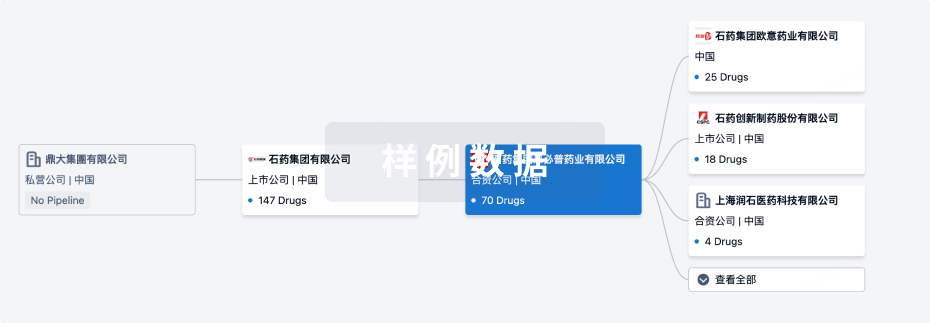
管线布局
2025年12月17日管线快照
无数据报导
登录后保持更新
药物交易
使用我们的药物交易数据加速您的研究。
登录
或
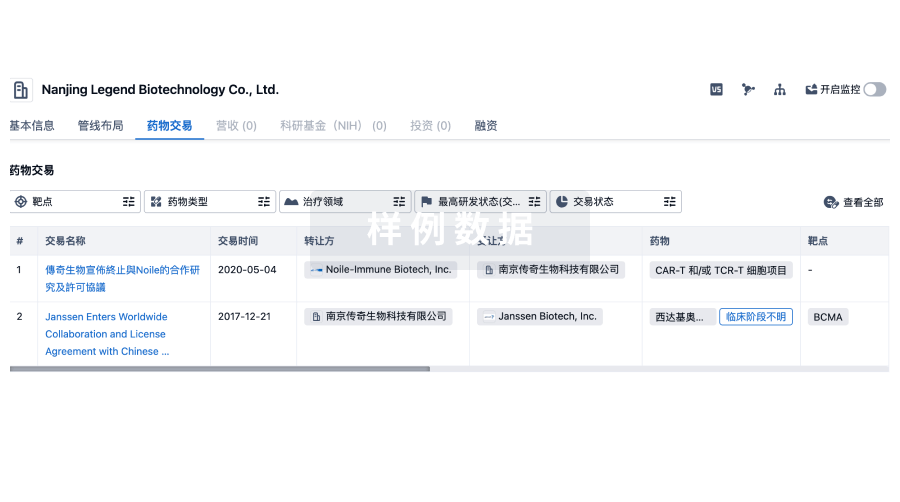
转化医学
使用我们的转化医学数据加速您的研究。
登录
或
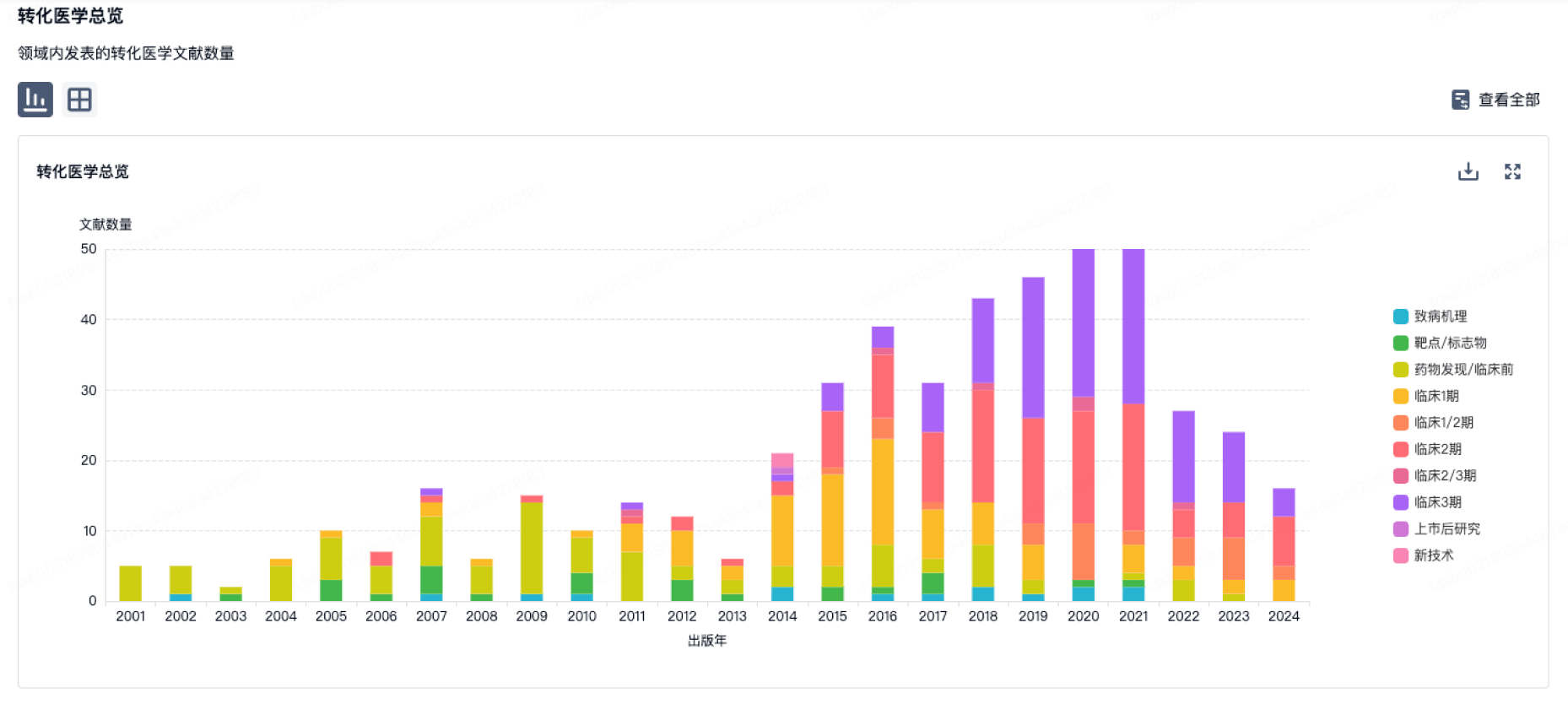
营收
使用 Synapse 探索超过 36 万个组织的财务状况。
登录
或
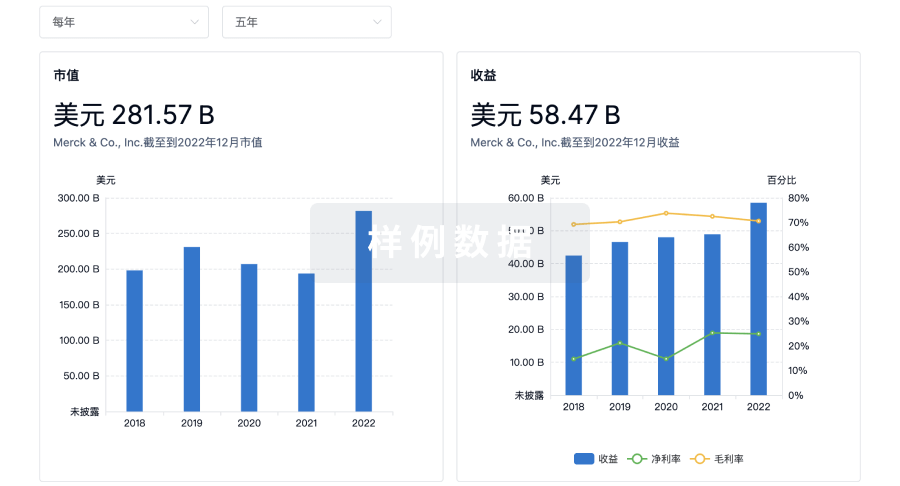
科研基金(NIH)
访问超过 200 万项资助和基金信息,以提升您的研究之旅。
登录
或
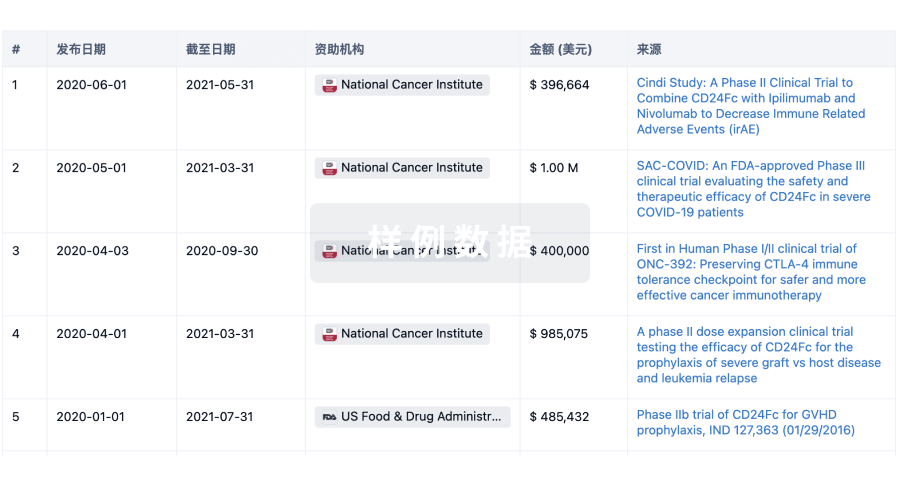
投资
深入了解从初创企业到成熟企业的最新公司投资动态。
登录
或
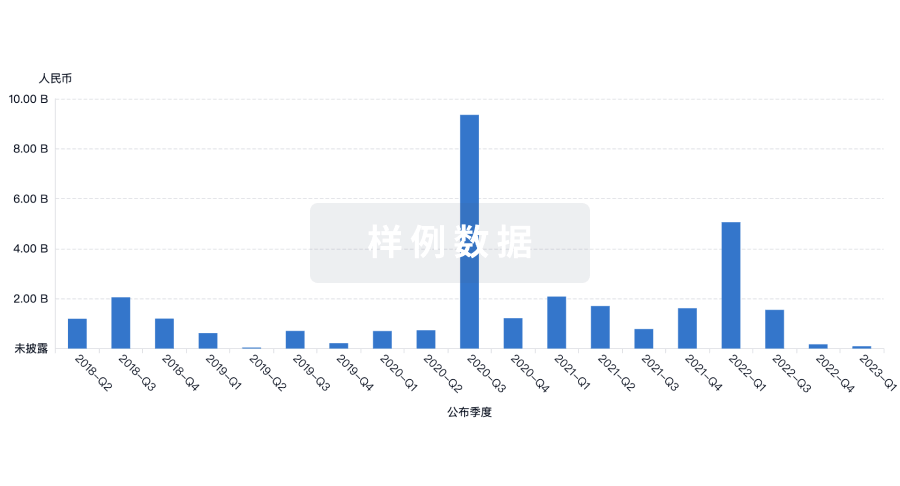
融资
发掘融资趋势以验证和推进您的投资机会。
登录
或
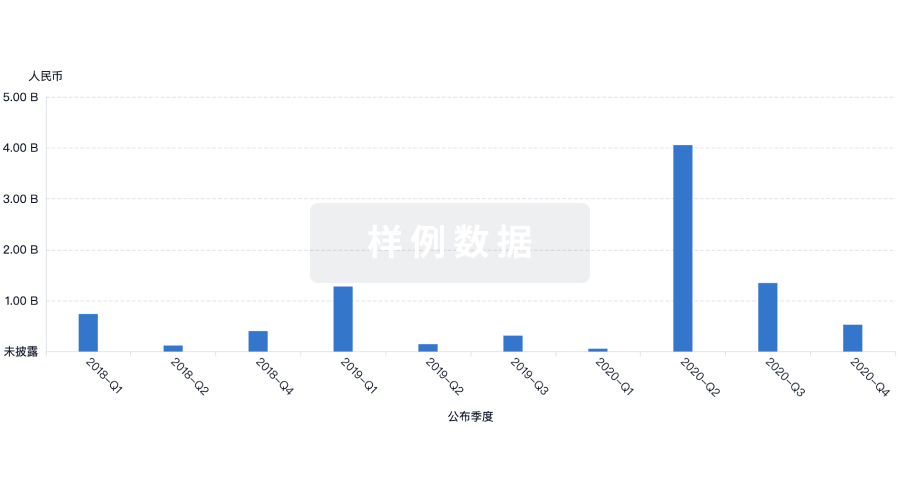
生物医药百科问答
全新生物医药AI Agent 覆盖科研全链路,让突破性发现快人一步
立即开始免费试用!
智慧芽新药情报库是智慧芽专为生命科学人士构建的基于AI的创新药情报平台,助您全方位提升您的研发与决策效率。
立即开始数据试用!
智慧芽新药库数据也通过智慧芽数据服务平台,以API或者数据包形式对外开放,助您更加充分利用智慧芽新药情报信息。
生物序列数据库
生物药研发创新
免费使用
化学结构数据库
小分子化药研发创新
免费使用

